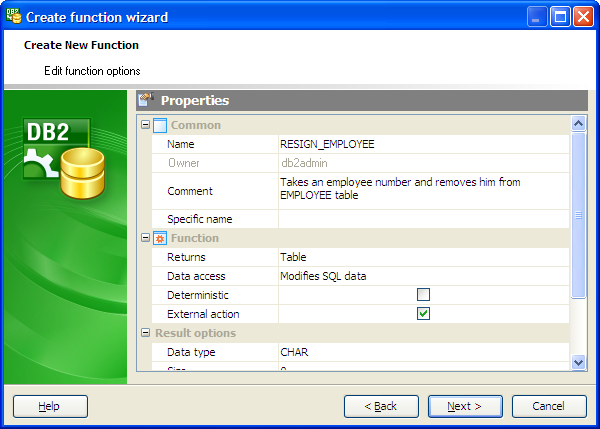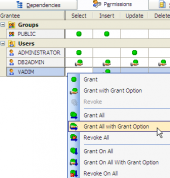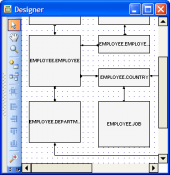DB2 Maestro online Help
| Prev | Return to chapter overview | Next |
Create Function Wizard
Create Function Wizard guides you through the process of creating a new Function. See How To create Function for instructions on running this wizard.
The basic principles of Create Object Wizards in DB2 Maestro are covered by the corresponding topic. See below to find the description of wizard steps that are unique to the current object.
Specify the properties for the new Function according to your needs. The detailed description is given below.

Specifying Function properties
Name
Specify a name for the function.
Owner
The field displays the owner of the new function. By default, only the owner of an object can perform various operations with the object. In order to allow other users to operate it, privileges must be granted. (However, users that have the superuser attribute can always access any object.)
Comment
Supply a comment to the Function if necessary.
 Deterministic
Deterministic
Check the box to indicate that the function returns the same result value whenever it is called with the same values for its arguments
Specific name
Provides a unique name for the instance of the procedure that is being defined. This specific name can be used when dropping the procedure or commenting on the procedure. It can never be used to invoke the procedure.
Data access (Contains SQL, Reads SQL data, Modifies SQL data)
Indicates the level of data access for SQL statements included in the procedure.
Contains SQL indicates that SQL statements that neither read nor modify SQL data can be executed by the procedure. Statements that are not supported in procedures might return a different error.
Reads SQL data Indicates that some SQL statements that do not modify SQL data can be included in the procedure.
Modifies SQL data indicates that the procedure can execute any SQL statement except statements that are not supported in procedures.
Dynamic result sets
Indicates the estimated upper bound of returned result sets for the procedure.
The description of the other Function properties you can find in DB2 SQL Reference Volume 2.
Managing parameters of a new Function
Use popup menu Add New Parameter... item to add a new parameter and set its properties in Parameter Editor. Use the Edit and Delete items to manage Function parameters.
| Prev | Return to chapter overview | Next |





 Download
Download Buy
Buy
